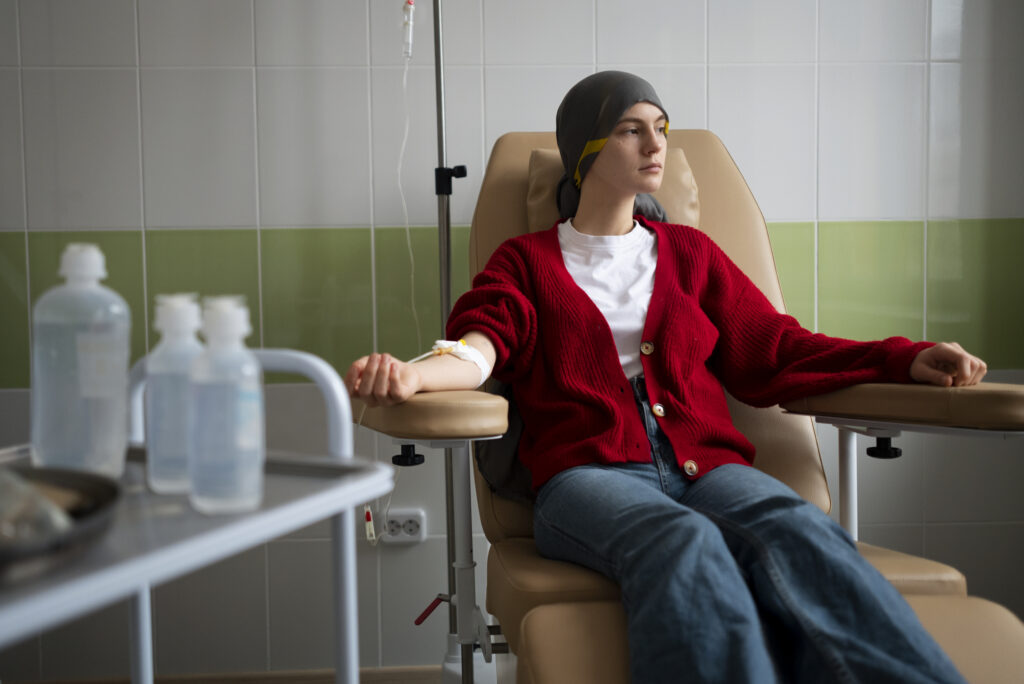Best Cancer Pain Treatment in Hyderabad

Get cancer pain free
Nearly half of cancer patients experience pain, which can show up in various ways. It may be short-lived or long-lasting, mild or severe, or even affect one or a few organs and bones. Since your pain is unique, we tailor treatment plans for cancer pain management to address your needs.
Causes of Pain: Pain from the tumor: Most cancer pain occurs when a tumor presses on bone, nerves or organs. The pain may vary according to location. For example, a small tumor near a nerve or the spinal cord may be very painful, while a larger tumor elsewhere may not cause discomfort.
Treatment-related pain: Chemotherapy, radiotherapy and surgery can cause pain. Also, certain painful conditions are more likely to occur in patients with a suppressed immune system, which is often a result of these therapies.
Post-operative pain: Relieving pain resulting from surgery helps people recuperate more quickly and heal more effectively.
Treating Pain: Cancer pain is very treatable. About nine out of 10 cancer pain patients find relief using a combination of medications. Many medicines are used for cancer pain management. Some drugs are general pain relievers, while others target specific types of pain and may require a prescription.
Mild to moderate pain:
Non-opioids: Examples are acetaminophen and nonsteroidal anti-inflammatory drugs (NSAIDs), like aspirin and ibuprofen. Most non-opioids can be purchased over the counter without a prescription.
Moderate to severe pain:
Opioids: Examples are morphine, hydromorphone, oxycodone, hydrocodone, codeine, fentanyl and methadone.
Tingling & burning pain.
Antidepressants: Examples are amitriptyline, imipramine, doxepin and trazodone. Taking an antidepressant does not mean that you are depressed or have a mental illness.
Antiepileptics: An example is gabapentin. Taking an antiepileptic does not mean that you are going to have seizures.
Non-Drug Pain Treatment Options:
These treatments will help your medicines work better and relieve other symptoms, but they should not be used instead of medication.
Biofeedback: A technique that makes the patient aware of bodily processes normally thought to be involuntary (blood pressure, skin temperature and heart rate). Patients can gain some conscious voluntary control of these processes, which can influence their level of pain.
Breathing and relaxation exercises: These methods focus the patient’s attention on performing a specific task, instead of concentrating on the pain.
Distraction: A method used to shift attention to a more pleasant event, object or situation
Heat or cold: Using temperature to facilitate pain control with packs or heating pads
Hypnosis: A focused state of consciousness that allows the patient to better process information
Imagery: Using soothing, positive mental images that allow the patient to relax
Massage, pressure and vibration: Physical stimulation of muscles or nerves can assist with relaxation and relieve painful muscle spasms or contractions.
Transcutaneous electrical nerve stimulation (TENS): A mild electric current is applied to the skin at the site of the pain.
When all these treatments fail… our advanced interventional techniques uniquely performed at Vedaa help in alleviating the pain.
1. Nerve Blocks:
What is a nerve block?
A nerve block is an injection of medication close to a targeted nerve or nerve group to relieve pain. An injection of anti-inflammatory medication in addition to local anesthetic may allow the damaged nerves to heal by relieving the inflammation.
Nerves are like cables that carry electrical signals between your brain and the rest of your body and vice versa. These signals help you feel sensations (like touch and pain) and move your muscles. They also maintain certain functions like breathing, sweating or digesting food. Nerve blocks mainly address issues with pain signaling, but they can’t affect other nerve functions.
2 . Radiofrequency Ablation:
What is radiofrequency ablation (RFA)?
Radiofrequency ablation (RFA), also called radiofrequency neurotomy, uses radio waves to create a current that heats a small area of nerve tissue. The heat destroys that nerve area, stopping it from sending pain signals to your brain. RFA can provide lasting relief for people with chronic pain, especially CANCER PAIN.
3 . Epidural catheters:
Similar to a pain pump, epidural catheters deliver pain medication that keeps your nerves from sensing pain. The catheter delivers ongoing doses of pain medication.
